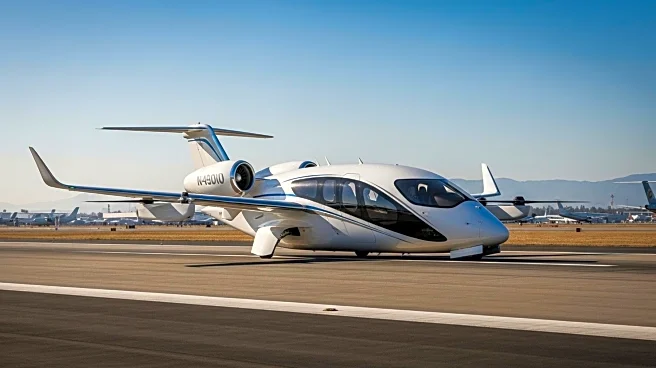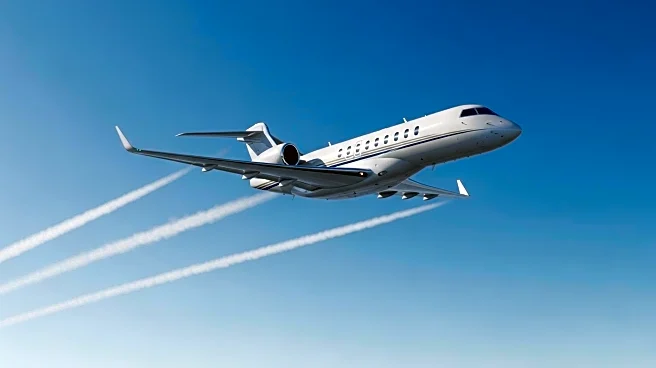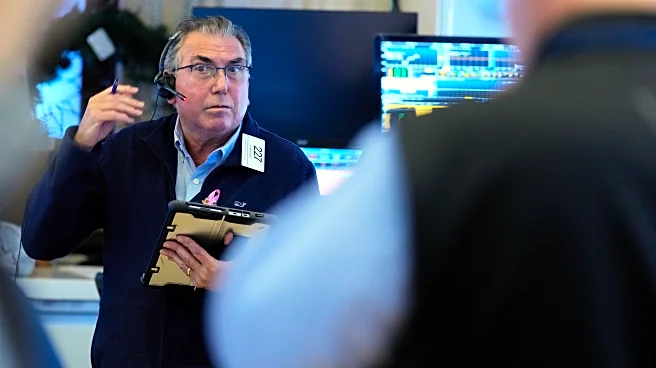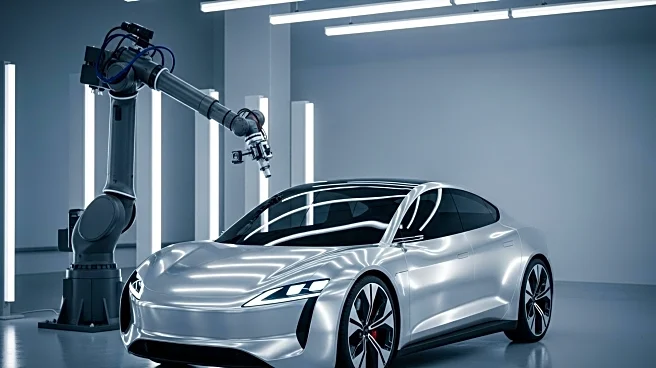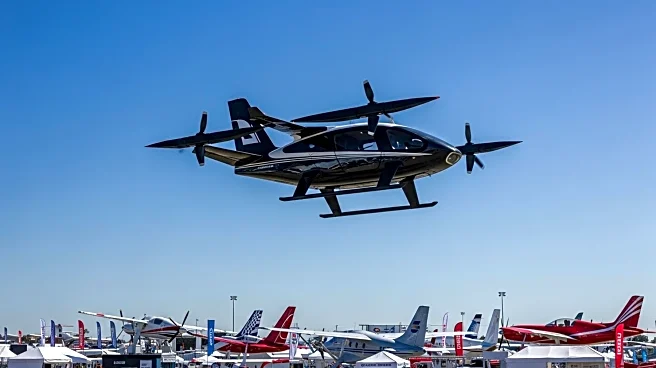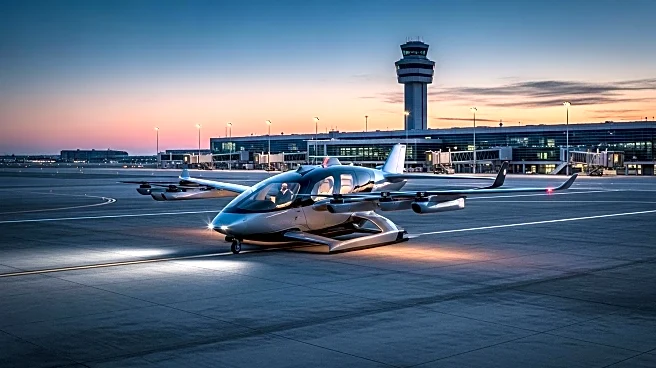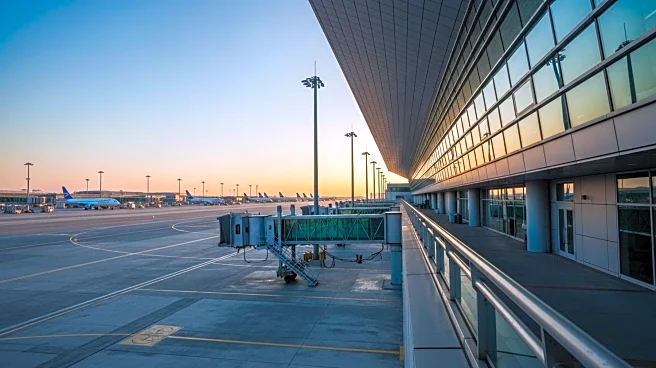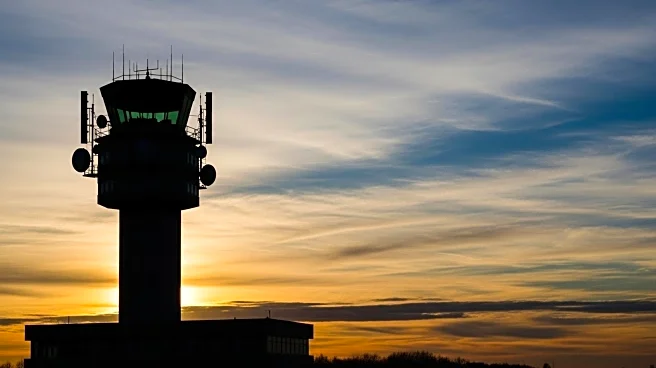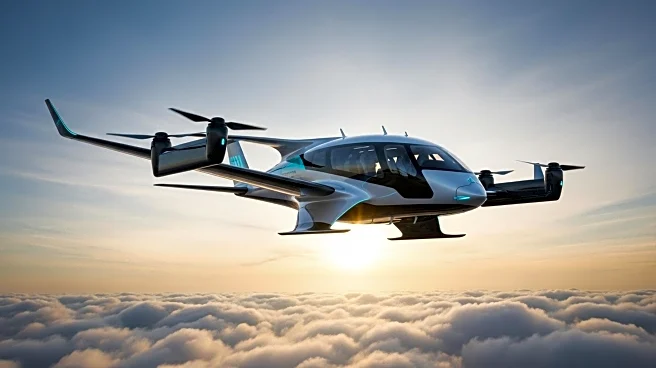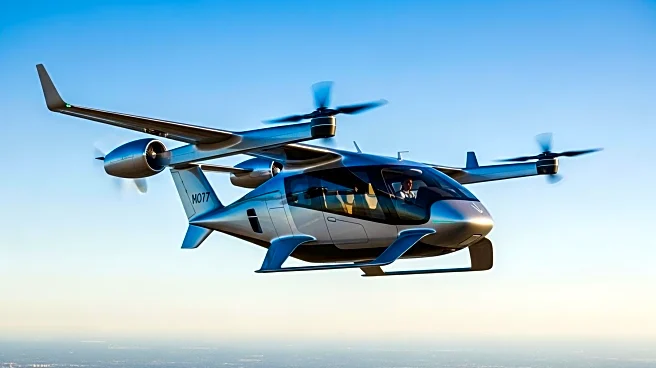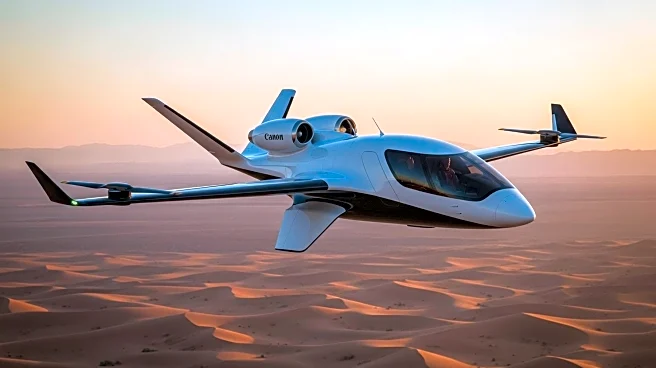What is the story about?
What's Happening?
Joby Aviation demonstrated its all-electric aircraft at the California International Airshow in Salinas, performing public flights between Marina and Salinas airports. The aircraft, designed for commercial passenger service, executed three round-trip flights, showcasing its operational reliability and noise reduction capabilities. These demonstrations are part of Joby's preparations for type inspection authorization flight testing by the US Federal Aviation Administration (FAA) scheduled for early next year. The company has previously conducted similar operations in Japan and plans to continue engaging with industry stakeholders and the public at the Dubai Airshow in November.
Why It's Important?
Joby Aviation's demonstration of its electric air taxi is a significant step towards the commercialization of urban air mobility solutions. The successful flights highlight the potential for quieter, more efficient air travel in urban environments, addressing concerns about noise pollution. This development is crucial for the future of transportation, offering a sustainable alternative to traditional air travel. The company's progress towards FAA authorization indicates a growing acceptance and regulatory support for electric air taxis, which could transform the aviation industry.
What's Next?
Joby Aviation is set to continue its engagement with industry stakeholders and the public at the Dubai Airshow in November. The company is also preparing for FAA type inspection authorization flight testing early next year, a critical step towards commercial air taxi services. As Joby advances its technology and regulatory approvals, other companies in the urban air mobility sector may accelerate their efforts to compete in this emerging market.
Beyond the Headlines
The introduction of electric air taxis by Joby Aviation could have long-term implications for urban planning and infrastructure development. As these vehicles become more prevalent, cities may need to adapt their transportation networks and policies to accommodate new forms of air travel, potentially leading to shifts in urban design and mobility strategies.
AI Generated Content
Do you find this article useful?
